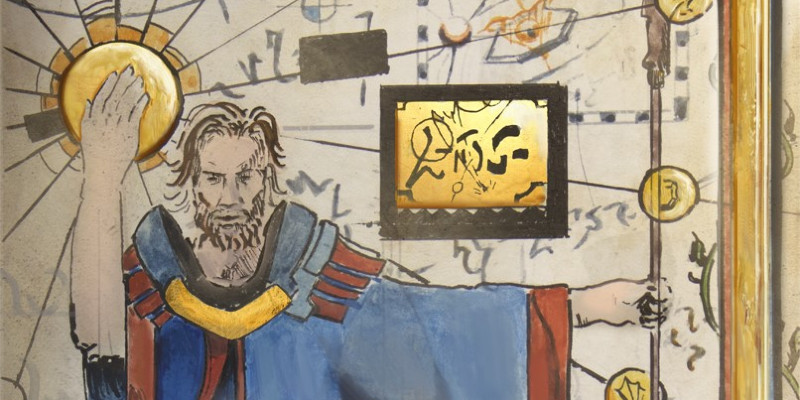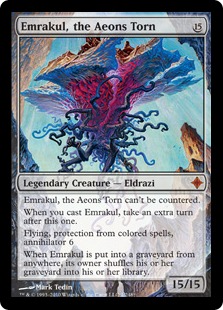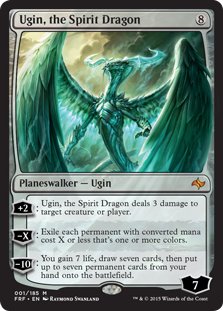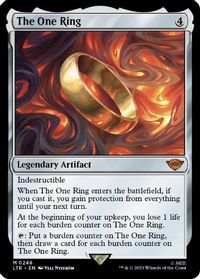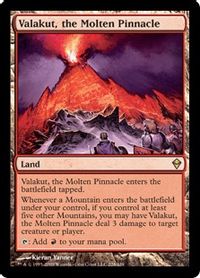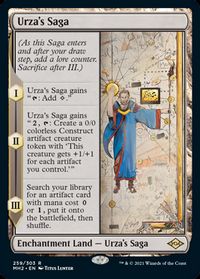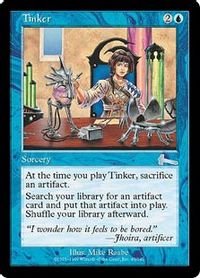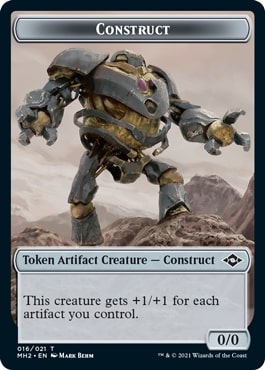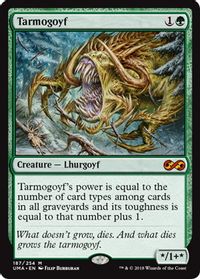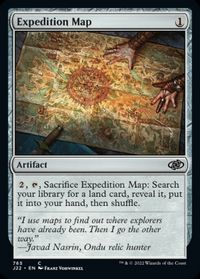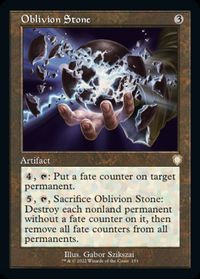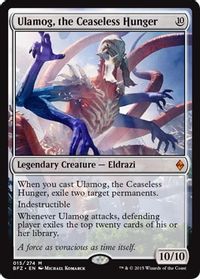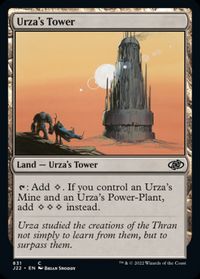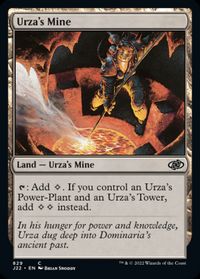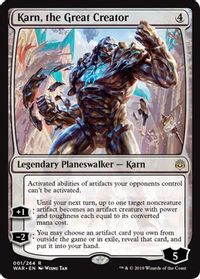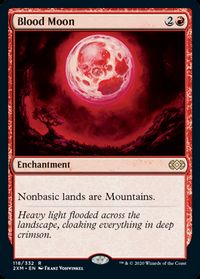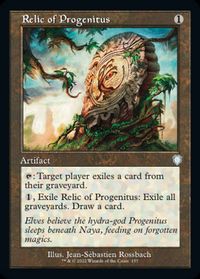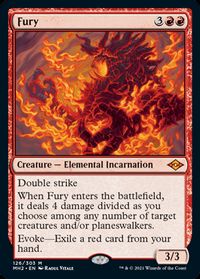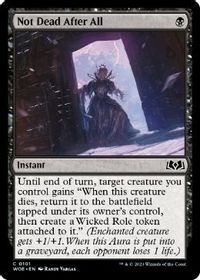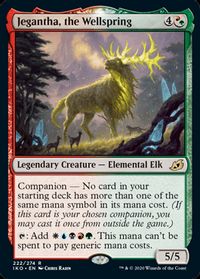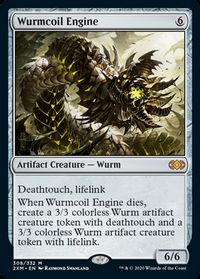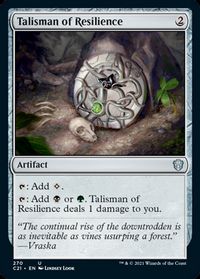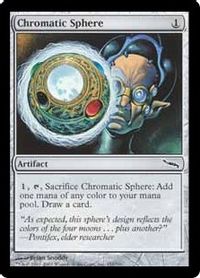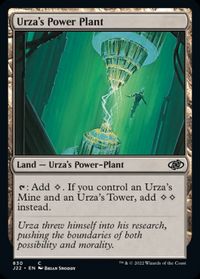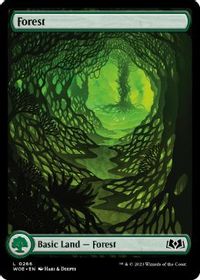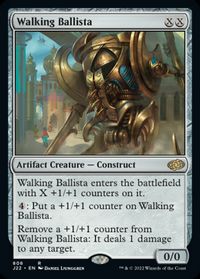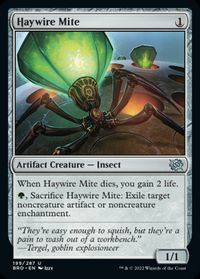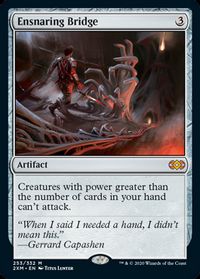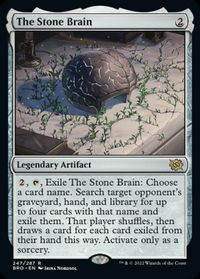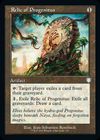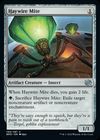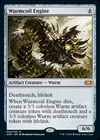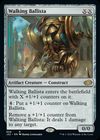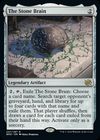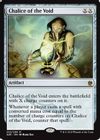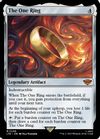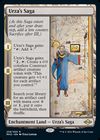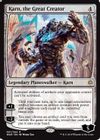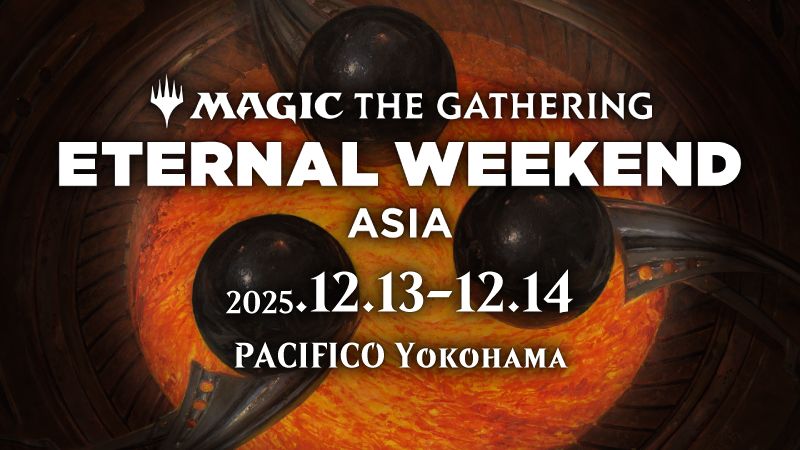Introduction
Hola!
Tron in Modern has been around for about 10 (!) years, making it one of the most long-lived decks in Magic history, since it really has changed only a few cards since then.
I briefly commented on some of the innovations we made on the Tron archetype on my Pro Tour Lord of the Rings report, but today I’m here to dive into the details of why we built the deck like we did and how to play this new version. I will also repeat some of the ideas mentioned in the article so I can explain them here in more detail.
- 2023/8/10
- Back to Back Pro Tour Top8s!
- Javier Dominguez
2023 Tron
This is my current take on Tron some months after the Pro Tour.
For those who have played Tron for years and have developed some heuristics on how to play the deck, this is my advice: throw them off the window unless specified otherwise. That’s what I had to do and it’s the best way to make sure we don’t missevaluate the different situations this deck will present.
The differences between the old Tron and the LOTR version are such that the archetype role it plays is simply different. Tron is not a Ramp deck anymore but a Control/Ramp one and that means the decklist, gameplay, and mulligan decisions need to be approached from a different perspective.
Now, if you go far enough, there was a period you could argue Tron was already a Ramp/Control deck because it had 《Eye of Ugin》 to search for 《Emrakul, the Aeons Torn》 but I simply think that’s not very accurate. That was a Ramp deck with land that gave it an inevitability, which is not the same as a deck trying to control the game.
What made this deck primarily a Ramp deck was the fact that the cards it was ramping into would simply win the game when executed in a large percentage of the situations.
You simply did not beat 《Karn Liberated》 on turn 3 with most archetypes back in 2015 and 《Ugin, the Spirit Dragon》 often did read as an eight mana win the game against most of the decks that were not named Splinter Twin.
Back to 2023, try playing 《Karn Liberated》 on the draw on turn 3 against a deck that’s not particularly weak against it. Good luck!
If the cards we are ramping into are not that good anymore, why would we play Tron?
Why to Play Tron
There are two big reasons to play the deck right now.
The first one and likely the bigger one is that Tron is the best 《The One Ring》 deck, a card in contention to be called the best card in Modern. Just like that.
The second reason to play Tron is the lack of very bad matchups across the most played decks which is something that has always hurt this archetype. In most metagames, there have always been decks like Storm or Valakut that were actively bad for Tron. Nowadays, there are still decks like Amulet Titan – that eliminated me from the Pro Tour! – or Hammer Time, but they are rarely found among the most played decks in the format.
One more aspect that makes the deck better is the fact that it’s now more of a hybrid deck where it can either control the game or slam a turn 4 《Ulamog, the Ceaseless Hunger》.
Generally speaking, playing and sideboarding against decks that can present different game plans tend to be hard, and given the same circumstances, these decks will get some advantage because our opponents will make some mistakes they might not make otherwise. 《The One Ring》 is the biggest enabler of that flexibility, but we also had to change the core of the deck to make it good enough to be a reactive deck.
Deckbuilding Choices
《Urza’s Saga》
As commented in the PT article, 《Urza’s Saga》 was the bigger improvement we made for the Pro Tour on this archetype.
All Tron decks played 《The One Ring》, but they did not play 《Urza’s Saga》 and it makes the whole deck work differently. It even has a flavor coincidence because it’s an Urza land!
《Urza’s Saga》 really does so much in this deck.
《Urza’s Saga》 also does something very interesting in Vintage 《Tinker》 decks, where its presence means the deck has an additional angle of victory generated simply by the construct tokens. It does the same here, as I actually won some matches in the PT by only attacking with the tokens. We’ve also seen fair decks like Jund Saga in Modern use this card to have an additional threat.
What puts 《Urza’s Saga》 over the top here is the fact that it can act as a wildcard for another Tron land after two turns since you can get an 《Expedition Map》 off the Chapter III.
This has bigger implications that it might seem on the surface. The first one is that we will be able to keep more hands that are somewhat slow but rely on having Tron. The second one is that it makes the deck way more difficult to play with, since deciding in which turn we play 《Urza’s Saga》 will often make the difference between winning and losing the game.
It’s impossible to have a rule about when to play 《Urza’s Saga》, but sometimes the details make a difference.
Consider this hand:
Assuming it’s a matchup where the Saga tokens are not particularly relevant, this is a hand I would lead with 《Urza’s Saga》 on Turn 1 against most decks, planning to go Turn 4 《Oblivion Stone》 Turn 5 《Ulamog, the Ceaseless Hunger》. 《Urza’s Saga》 tokens also have tension with 《Oblivion Stone》, anyway.
A large amount of the times I go Turn 1 《Urza’s Saga》 will involve 《Oblivion Stone》 but other hands can be ones with a lot of 4s I want to double spell on Turn 5. It’s also a reasonable play if your hand is missing a piece but is otherwise decent against 《Blood Moon》 if you simply want to cash the 《Urza’s Saga》 for a 《Expedition Map》.
Other situations involve getting a hate piece like 《Relic of Progenitus》 game 1 on the play against Living End.
《Dismember》
If we are a control deck we need removal, and 《Dismember》 is the best removal you can play with colorless mana. It’s actually incredibly efficient and the best answer we have to 《Ragavan, Nimble Pilferer》 and 《Dauthi Voidwalker》.
However, the part that made us feel that 《Dismember》 was broken was how it turned Scam’s best possible start against us – Turn 1 《Fury》 – into a punishment for them, as they often have to go all-in on that start.
《Dismember》 is simply excellent here and it’s one of the reasons to not play 《Jegantha, the Wellspring》. Jegantha, even if it’s sometimes relevant, doesn’t do enough compared to how massively impactful 《Dismember》 often is. Particularly on the Rakdos matchup, it is our best card.
I said one of the reasons because the other one is the fact that 《Jegantha, the Wellspring》 costs a sideboard slot. Now, that’s true for all Jegantha decks and that never stops us from playing it, we would play it here if we could, but the fact that the sideboard in this deck is extremely tight compared to non-《Karn Liberated》 decks makes it so if we needed a tiebreak I would still gravitate towards not playing the Companion.
Others
I have added one additional 《Wurmcoil Engine》 since the Pro Tour as Rakdos is getting more and more share of the metagame and Wurmcoil happens to be quite good there even if otherwise it doesn’t look great. It has also saved me here and there against decks like Burn.
Those three cards were the most controversial ones during our testing process on Team Handshake.
Ultimately, it is hard to know if we nailed the exact numbers but I was happy enough with them that I haven’t changed them so far. The whole idea behind these changes is that they were not really changes, they were added from scratch. In the case of the 《Chromatic Star》, for example, I didn’t find a reason to play more cantrips.
Could’ve been a total of 6 Spheres, or a total of 4, but it was quite clear to me playing too many of this type of card would put too much air in a deck that was trying to be reactive. I actually played a bunch of game with every number of Spheres from 4 to 8 and 5 was where I was happier. To my surprise, deck was functional even with 4, which is something I didn’t exactly expect when I started trying from 8. Magic decks sometimes surprise you, though!
Once we were playing less 《Chromatic Star》, playing less 《Sylvan Scrying》 was a consequence, as we were feeling that the deck was sometimes a little bit bottlenecked on green mana. In exchange, we were better against 《Orcish Bowmasters》 and 《Dauthi Voidwalker》!
《Talisman of Resilience》 is simply a tribute to how good our 4 drops are and also a way to make sure we have enough green mana.
How to Mulligan with Tron
“Mulligan everything that doesn’t get Tron on turn 3”
— 2010s players.
That’s simply not the case anymore. We are not trying to Turbo-Ramp Tron on turn 3 every game. We happily take the Tron hands – obviously – but we will also keep, in most matchups, hands that can interact well and play 《The One Ring》 or even 《Karn, the Great Creator》. Even more so if we have 《Talisman of Resilience》 with us.
This hand, for example is a clear keep in almost every matchup.
We can keep a variety of hands that have too much of a fast Tron potential. For example, having a hand with any 3 lands a 《Dismember》 and some other spells is going to be decent against a creature deck.
Then again, based on the matchups we might still need to mulligan a lot, particularly if our hand is incapable of winning a fair game, but I really recommend thinking twice before mulliganing a hand “that doesn’t get Tron early enough”.
Sideboarding Guide
Sideboarding with Tron is often underlooked because it’s a 《Karn, the Great Creator》 deck, but in reality, it is quite important to do it well.
On tournaments like a Pro Tour, the metagame tends to be more condensed in a few decks, but on a local level Modern can be quite vast and you can play against a bunch of different decks to the point where it’s impossible to cover every single one of them. Therefore, I will talk about how to think through sideboarding and also give a brief guide on how to approach the most popular matchups.
The questions you have to ask yourself are:
・Is 《Dismember》 bad?
・Is 《Relic of Progenitus》 bad?
・Is 《Wurmcoil Engine》 bad?
・Is 《Walking Ballista》 bad?
The answer to these questions will give you a direction on how to sideboard, as first we decide what to take out and then we try to fill the gaps with whatever we have access to in our sideboard.
Generally speaking, we don’t want to sideboard in our best Karn target but other than that we want to sideboard the ones that are the best after that one, particularly if they are quite broad and will not be dead in many situations.
There are also cards like the 2nd 《Haywire Mite》 or 《Ensnaring Bridge》 among others that we will virtually never sideboard in. Also, keep in mind that cards like 《The Stone Brain》 are often better on the play as they can get under the Cascades but don’t do the same on the draw.
Rakdos Scam

vs. Rakdos Scam
The most important thing to remember here is that we are NOT sideboarding it the extra 《Wurmcoil Engine》 as it’s our best Karn target.
4C Omnath

vs. 4C Omnath
Cascade Crush

vs. Cascade Crush(On the Play)

vs. Cascade Crush(On the Draw)
Thanks for reading! Try the reborn Tron!


